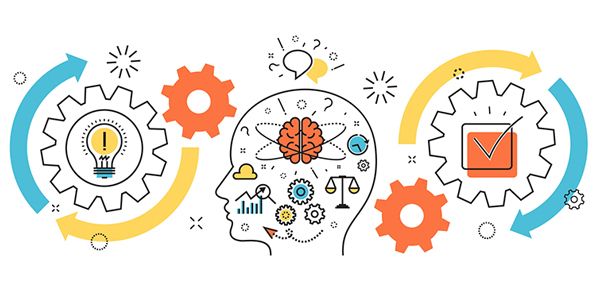On one of my earlier blogs, I described what I thought are the 3 key activities a BA should be doing when they were in a Discovery phase of a project.
The feedback I received was positive so I thought I’d give, what I consider to be are the 4 key activities are for a BA in an Alpha phase.
So what exactly is an ‘Alpha’?
In the UK, the Government Digital Service (GDS) defines the phases in an Agile delivery lifecycle as; Discovery, Alpha, Beta, Live and Retiring the service. GDS also cover in detail how the Alpha phase works, but what’s not covered in the article is what each role in a delivery team does within an Alpha, including Business Analysts.
If you’re not familiar with the names of these phases, they are the same for pretty much all Agile project delivery. The most common themes I’ve come across are;
- Concept, inception, iteration, release, production, retirement
Moving Discovery outputs in to an Alpha
Key outputs from the Discovery the BA should have been heavily involved in include:
- Stakeholder analysis
- Understanding and defining the problem
- Starting the product backlog
Each of these outputs now need to be taken through in to Alpha by the BA and here’s how.
Stakeholder analysis – Use your stakeholder knowledge
An Alpha to me is the exciting part of the Agile delivery lifecycle as this is where you actually start putting ideas and concepts in front of users and you learn ‘how’ they will really interact with your product and get valuable feedback. To ensure you get as honest and realistic feedback as possible, it’s important to try and create as real-life scenarios as possible to test the prototype with users. To do this, the BA should use their knowledge of working with stakeholders in Discovery and take this in to the development of the prototype with the designers on the team. After all, if you were the BA involved in Discovery, one of your key outputs is understanding the users and their needs, and that includes the needs of the business. Therefore, armed with this insightful knowledge, you should work closely with the design team to ensure they also understand the users.
Understanding and defining the problem – Keeping the product vision in view
During Discovery, the team will have (or certainly should have) defined the problem that needs to be fixed and from that, a product vision should also have been defined. Roman Pichler has an excellent article on how to create a compelling product vision which I highly recommend you read as well as all the other articles he has on his website.
For me, the product vision is one of, if not the key outputs from Discovery and is something that should be visible and referred all the way through the delivery lifecycle. All too often I’ve seen the product vision put up on the team wall (or worse, in a folder on the Product Owners laptop) but no one seems to take any notice of it and it becomes just a part of the wall space along with user research findings, sprint boards, etc. To make sure the product vision stays in view, and you have wall space, have it beside your user story map (coming up in the next section). Pretty much everything that’s in your user story map should stem from the product vision, so keep them close together.
Starting the product backlog – Make sure prototypes stem from user needs (building your user story map)
How prototypes are developed is different for all teams but in my view, the quicker you get to an interactive prototype, the better. I’m all for sketching out designs to protect costs and save time, but only once a prototype is in the hands of users and seeing their interactions with it, will you start to get valuable (and workable) insights to develop the prototype further. And remember, as the BA, you’re going to start building the product backlog based on the findings and create your user story map. If you’re even half serious about being a Business Analyst, I don’t need to tell you the powerful impact of user story mapping but if you need reminding, here’s Jeff Paton (the guy who came up with the idea of user story mapping) showing you how to create one.
Help the team design iteratively
Having your user story map on the team wall (or online if you are a in several locations. I recommend www.storiesonboard.com as a user story mapping tool) is a great way to galvanise the team and ensure what you’re doing aligns with the product vision (hence having the vision next to the map). As we know, agile delivery focuses on building products in an iterative way and this principle should apply to designing prototypes in Alpha. I quite often see designers go off and start building complex, end to end user journey. For this very reason, having a user story map will encourage the design team to not think too far ahead. After all, your map will have an ‘MVP’ (or Release 1 if you’re not comfortable with the term MVP) swim-lane where you’ll define as a team what features will (or might) go in the MVP and this is what the design team should be focusing on prototyping.
And finally…
Don’t misunderstand me, and this is based on the feedback from my ‘BA in a Discover’ blog, these are not the only 3 activities a BA will carry out in an Alpha and you will no doubt carry out more than this (e.g. writing the user stories for Beta, working with technical architects/software developers to ensure what is being designed and tested with users can actually be built, continually developing the backlog, etc) however I’ve seen projects where the BAs have not been involved much in the design process and this which has led to problems further down the delivery process. Remember, you as the BA are the bridge between the design team and the developers/testers!!
An Alpha (or iteration) phase can last several weeks and if you as the BA follow these activities, you’ll ensure the product is designed with the users in mind, in an iterative way, and that when you get to the Beta phase (blog coming soon), your product will be delivering the value defined by the product vision.




